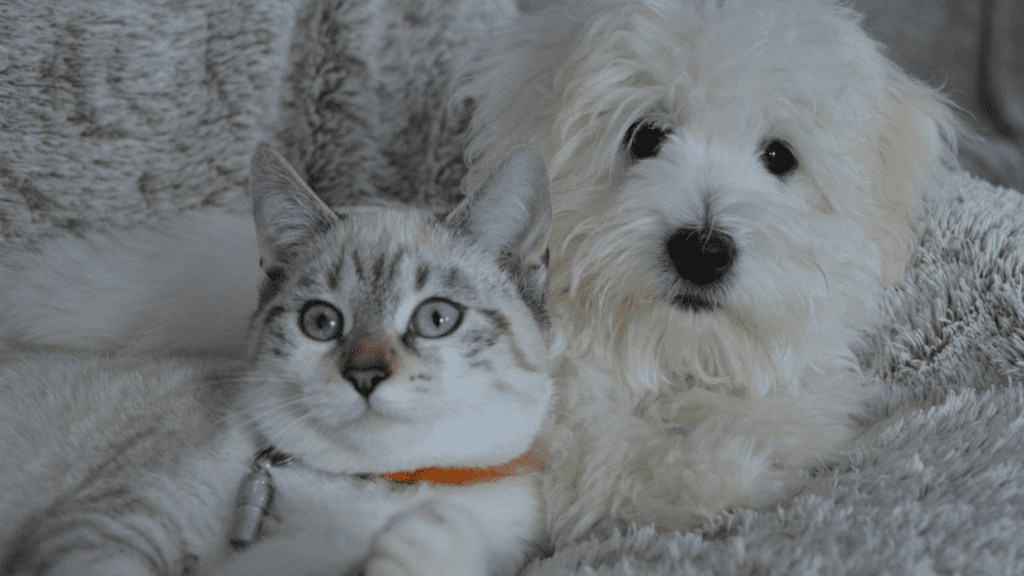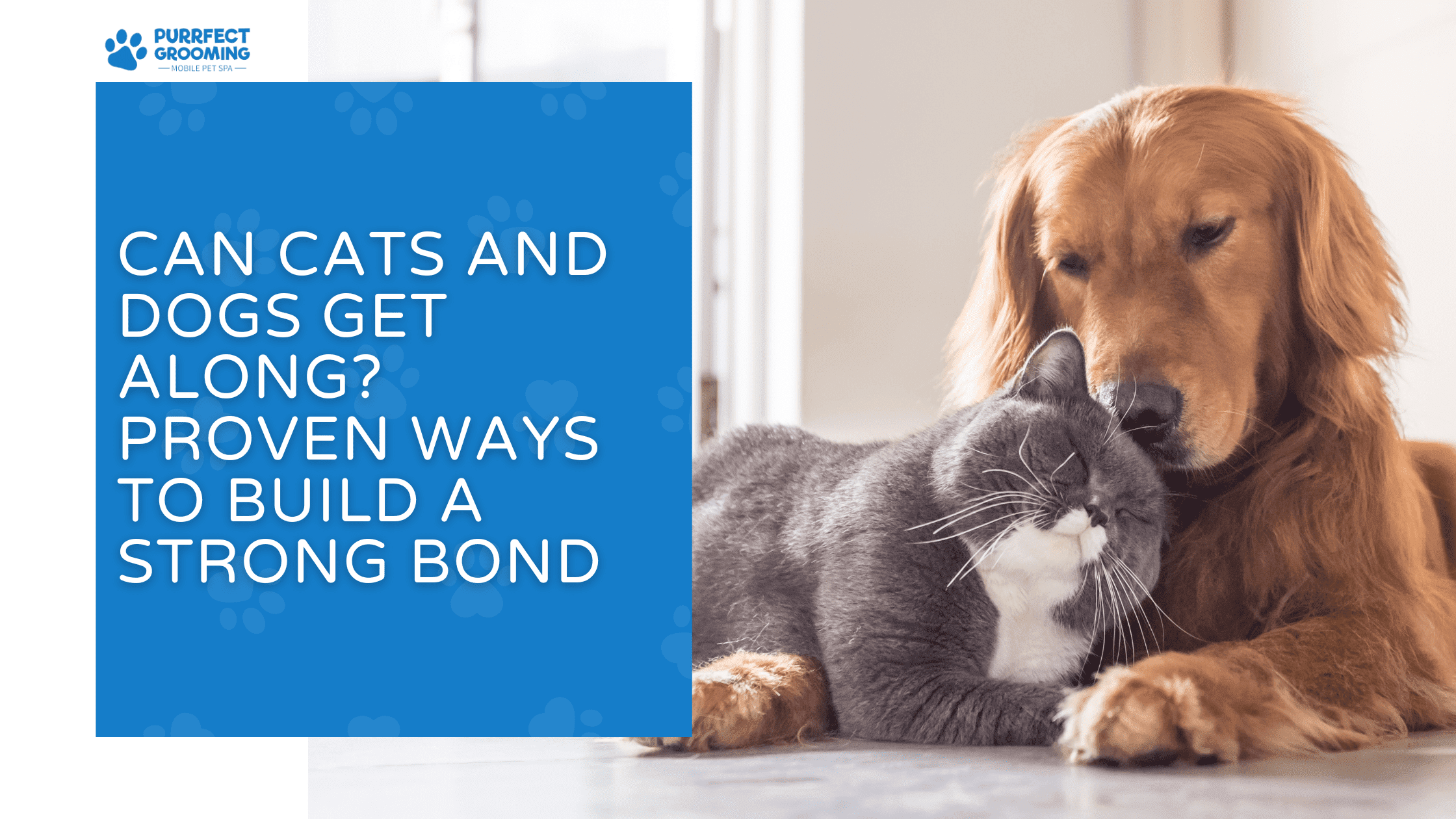Can Cats and Dogs Get Along? Proven Ways to Build a Strong Bond
Can cats and dogs get along? This question has been asked by pet owners for centuries. Pop culture and cartoons often depict these two species as mortal enemies, constantly at odds with each other. However, the reality is much more nuanced. Cats and dogs can, and often do, form strong bonds of friendship when introduced properly and given the right environment.
A study by the American Veterinary Medical Association found that 80% of pet owners report their cats and dogs coexist peacefully when introduced correctly. This shows that with a little patience and effort, your pets can live harmoniously and even become the best of friends.
If you’ve ever wondered, “Can cats and dogs be friends?” or “Can dogs be friends with cats?”, this guide is for you. We’ll explore the factors influencing cat and dog friendships, how to introduce them successfully, and tips for fostering a loving relationship between these two species.
Understanding Cat and Dog Behavior
Before introducing a cat and a dog, it’s crucial to understand their fundamental differences in behavior and communication. Their instincts, social structures, and body language are vastly different, which can lead to misunderstandings if not managed properly.
Instinctual Differences Between Cats and Dogs
Cats and dogs come from different evolutionary backgrounds, which influences their behaviors:
- Hunting Instincts: Cats are natural hunters, preferring to stalk and pounce on their prey. Dogs, on the other hand, chase and retrieve.
- Social Structure: Dogs are pack animals that thrive in social groups. Cats, although capable of forming bonds, are more independent by nature.
- Territorial Tendencies: Cats are highly territorial and may feel threatened when a new pet enters their space. Dogs are more adaptable but can exhibit dominance behaviors.
Communication Styles and How They Affect Friendships
Because cats and dogs communicate differently, misunderstandings can occur:
- Tail Wagging: A wagging tail in dogs signals excitement or friendliness, whereas a wagging tail in cats usually indicates agitation or annoyance.
- Vocalization: Dogs bark and growl to express emotions, while cats use purring and hissing to communicate.
- Body Language: A dog rolling over indicates submission, whereas a cat exposing its belly is usually a defensive posture.
Understanding these differences can help prevent conflicts and misinterpretations between your pets.
Can Cats and Dogs Be Friends?
Yes! Cats and dogs can develop strong, affectionate bonds, but several factors influence their friendship.
Factors That Influence Cat and Dog Friendship
- Age – Puppies and kittens raised together are more likely to bond.
- Temperament – Some breeds and personalities are naturally more accepting.
- Past Experiences – A dog that has been exposed to cats in the past is more likely to accept a new feline companion.
- Environment – A stress-free introduction and a safe space for both pets make a big difference.
Real-Life Stories of Cats and Dogs as Best Friends
Many pet owners have shared heartwarming stories of their cats and dogs forming inseparable bonds. Dogs that act as protective siblings to their feline companions or cats that groom and cuddle with their canine friends show that interspecies friendships are possible and rewarding.

How to Introduce a Cat to a Dog Successfully
A proper introduction is essential to ensuring a successful cat and dog relationship. Here’s a step-by-step guide:
Preparing Your Home for the First Meeting
- Create separate safe zones: Ensure both pets have their own space before the introduction.
- Use scent swapping: Exchange their bedding to familiarize them with each other’s scent.
- Provide vertical space: Cats feel safer when they have higher ground, such as cat trees or shelves.
Step-by-Step Guide to Introducing Cats and Dogs
- Keep them separated initially: Let them sniff each other under a closed door.
- Use a barrier or crate: Allow them to observe each other without direct contact.
- Short, supervised meetings: Keep the first interactions brief and positive.
- Reward calm behavior: Treats and praise reinforce good interactions.
- Monitor their progress: Gradually increase their time together.
Common Problems and How to Solve Them
Signs Your Cat and Dog Are Not Getting Along
- Constant hissing or growling
- Avoidance or hiding
- Aggressive chasing
How to Address Aggression or Fear
- Reintroduce them slowly: Take a step back if aggression occurs.
- Use calming aids: Feliway diffusers and calming treats can help.
- Consult a professional: A behaviorist may be needed for persistent issues.
Training Tips for Cats and Dogs Living Together
Teaching Dogs to Be Gentle with Cats
- Train commands like “leave it” to prevent chasing.
- Reward calm behavior with treats and praise.
Encouraging Cats to Accept Dogs
- Let the cat approach at its own pace.
- Provide high perches for the cat to observe safely.
Conclusion
A cat and dog friendship is possible with the right approach, patience, and a bit of training. By following the steps outlined in this guide, you can help your pets form a loving and peaceful relationship.
🔥 Pro Tip: Always provide separate resting areas for both pets, so they can retreat when they need space. This ensures a harmonious coexistence!
FAQs
1. How long does it take for cats and dogs to get along?
It varies, but typically, it can take anywhere from a few days to several months. Patience is key.
2. What if my cat is afraid of my dog?
Give your cat a safe space and introduce them slowly with positive reinforcement.
3. Can older cats and dogs become friends?
Yes, but older pets may take longer to adjust. Gradual introductions are essential.
4. Do certain breeds struggle more with interspecies friendships?
Yes, high-prey-drive breeds may need more training and supervision.
5. What are the signs of a successful cat and dog friendship?
Relaxed body language, mutual grooming, and playing together indicate a strong bond.
